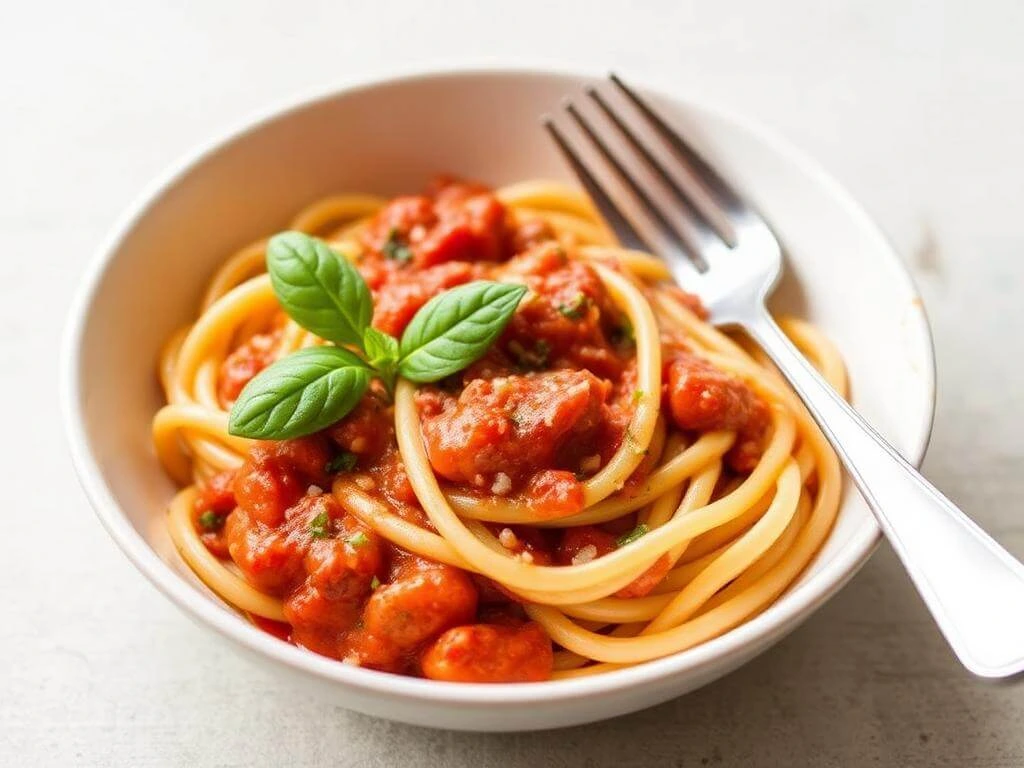Introduction
Pasta is a beloved staple in kitchens around the world, and what truly elevates a simple bowl of noodles into a culinary masterpiece is the sauce. Whether you prefer a rich, hearty Bolognese or a light, zesty pesto, the right sauce can transform your pasta dish from ordinary to extraordinary. With countless variations and flavors to explore, pasta sauces offer endless possibilities for creativity in the kitchen.
In this post, we’ll dive into 10 irresistible pasta sauce recipes that you absolutely need to try. From classic tomato-based sauces to creamy delights and unique creations, each recipe is designed to tantalize your taste buds and inspire your next meal. Whether you’re cooking for a family dinner, a romantic date night, or simply treating yourself, these sauces will add a burst of flavor to your favorite pasta dishes.
So grab your apron and get ready to discover the art of pasta sauce-making. Let’s explore these delicious recipes that will not only satisfy your cravings but also impress your guests!
Classic Tomato-Based Sauces
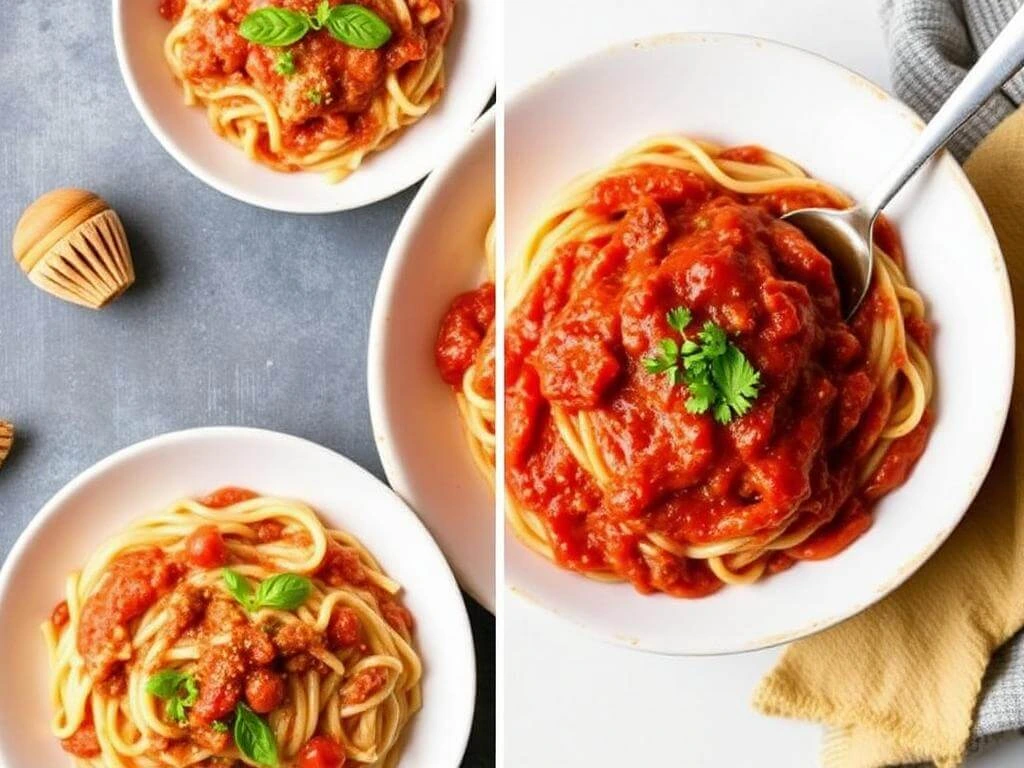
- Cooking Techniques:
- Serious Eats – How to Make Pasta Sauce
A comprehensive guide on various pasta sauce techniques and tips.
- Serious Eats – How to Make Pasta Sauce
Marinara Sauce
Ingredients and Preparation Method
Marinara sauce is a classic Italian tomato sauce that is both simple to make and incredibly versatile. To prepare this delicious sauce, you will need the following ingredients:
- 2 tablespoons olive oil: For sautéing and adding richness.
- 4 cloves garlic, minced: Fresh garlic gives the sauce its aromatic base.
- 1 can (28 ounces) crushed tomatoes: The star ingredient, providing the sauce’s body and flavor.
- 1 teaspoon dried oregano: Adds a warm, earthy flavor.
- 1 teaspoon dried basil: For a hint of sweetness and freshness.
- Salt and pepper to taste: Essential for seasoning.
- A pinch of red pepper flakes (optional): For those who enjoy a little heat.
Preparation Steps:
- Sauté the Garlic: In a large saucepan, heat the olive oil over medium heat. Add the minced garlic and sauté for about 1-2 minutes, or until fragrant but not browned.
- Add the Tomatoes: Pour in the crushed tomatoes, stirring to combine with the garlic and oil.
- Season the Sauce: Add the dried oregano, dried basil, salt, and pepper. If you like a bit of spice, sprinkle in the red pepper flakes.
- Simmer: Bring the sauce to a gentle simmer. Reduce the heat to low and let it cook for about 20-30 minutes, stirring occasionally. This allows the flavors to meld and the sauce to thicken.
- Taste and Adjust: Before serving, taste the sauce and adjust the seasoning as needed. You can add more herbs or a touch of sugar if the sauce is too acidic.
Best Pasta Pairings
Marinara sauce is incredibly versatile and pairs well with a variety of pasta shapes. Here are some of the best options:
- Spaghetti: The classic pairing, where long strands of pasta are coated in the rich tomato sauce.
- Penne: The tube shape holds the sauce beautifully, making each bite flavorful.
- Fusilli: The spirals of fusilli catch the sauce, ensuring a deliciously saucy experience.
- Lasagna: Use marinara as a layer in your lasagna for added flavor and moisture.
Variations and Tips
While traditional marinara sauce is delightful on its own, you can easily customize it to suit your taste:
- Add Fresh Herbs: For a burst of freshness, consider adding chopped fresh basil or parsley just before serving.
- Incorporate Vegetables: Sauté diced onions, bell peppers, or mushrooms along with the garlic for added texture and flavor.
- Make it Meaty: For a heartier sauce, brown some ground beef or Italian sausage in the pan before adding the tomatoes.
Bolognese Sauce
Ingredients and Preparation Method
Bolognese sauce, or “ragù alla Bolognese,” is a rich, hearty meat sauce that originates from Bologna, Italy. It’s perfect for those who crave a filling and flavorful pasta dish. Here’s what you’ll need to make a traditional Bolognese sauce:
- 2 tablespoons olive oil: For sautéing the vegetables and meat.
- 1 onion, finely chopped: Adds sweetness and depth to the sauce.
- 1 carrot, finely chopped: Provides a subtle sweetness and color.
- 1 celery stalk, finely chopped: Contributes to the classic mirepoix base.
- 2 cloves garlic, minced: For aromatic flavor.
- 1 pound ground beef (or a mix of beef and pork): The main protein source.
- 1 cup red wine: Adds richness and depth; choose a dry wine.
- 1 can (28 ounces) crushed tomatoes: The base of the sauce.
- 1 cup whole milk: For creaminess and to balance acidity.
- Salt and pepper to taste: Essential for seasoning.
- 1 teaspoon dried oregano: Adds a warm, herbal note.
- 1 bay leaf: For additional flavor during simmering.
Preparation Steps:
- Sauté the Vegetables: In a large pot or Dutch oven, heat the olive oil over medium heat. Add the chopped onion, carrot, and celery (the classic mirepoix) and sauté for about 5-7 minutes, or until the vegetables are softened.
- Add Garlic and Meat: Stir in the minced garlic and cook for an additional minute. Then, add the ground beef (or meat mixture) and cook until browned, breaking it up with a spoon as it cooks.
- Deglaze with Wine: Pour in the red wine, scraping the bottom of the pot to release any browned bits. Allow the wine to simmer for about 5 minutes, or until it has reduced slightly.
- Incorporate Tomatoes and Milk: Add the crushed tomatoes, milk, oregano, bay leaf, salt, and pepper. Stir to combine.
- Simmer: Bring the sauce to a gentle simmer. Reduce the heat to low and let it cook uncovered for at least 1.5 to 2 hours, stirring occasionally. The longer it simmers, the more the flavors will develop. If the sauce becomes too thick, you can add a splash of water or broth.
- Taste and Adjust: Before serving, taste the sauce and adjust the seasoning as needed. Remove the bay leaf before serving.
Best Pasta Pairings
Bolognese sauce is traditionally served with wide pasta shapes that can hold up to the hearty sauce. Here are some excellent pairings:
- Tagliatelle: The classic choice, as the flat noodles cling beautifully to the sauce.
- Pappardelle: Wider than tagliatelle, these noodles provide a luxurious base for the rich sauce.
- Fettuccine: Another great option that complements the sauce’s texture.
- Lasagna: Use Bolognese as a layer in your lasagna for a rich and satisfying dish.
Variations and Tips
While traditional Bolognese sauce is delicious as is, you can customize it to suit your preferences:
- Add Vegetables: For extra nutrition, consider adding finely chopped mushrooms or bell peppers to the sauce.
- Use Different Meats: Experiment with ground turkey or chicken for a lighter version, or add pancetta for a richer flavor.
- Finish with Fresh Herbs: Just before serving, sprinkle chopped fresh basil or parsley for a burst of freshness.
Spicy Arrabbiata Sauce
Ingredients and Preparation Method
Arrabbiata sauce is a classic Italian sauce known for its bold flavors and spicy kick. The name “arrabbiata” translates to “angry” in Italian, which refers to the heat from the red pepper flakes. This sauce is quick to prepare and is perfect for those who enjoy a bit of spice in their pasta dishes. Here’s what you’ll need:
- 2 tablespoons olive oil: For sautéing and adding richness.
- 4 cloves garlic, minced: The aromatic base of the sauce.
- 1 can (28 ounces) crushed tomatoes: The main ingredient that forms the sauce.
- 1 teaspoon red pepper flakes: Adjust to taste for desired spiciness.
- 1 teaspoon dried oregano: Adds a warm, herbal flavor.
- Salt and pepper to taste: Essential for seasoning.
- Fresh basil leaves (optional): For garnish and added freshness.
Preparation Steps:
- Sauté the Garlic: In a large skillet, heat the olive oil over medium heat. Add the minced garlic and sauté for about 1-2 minutes, or until fragrant but not browned. Be careful not to burn the garlic, as it can turn bitter.
- Add the Crushed Tomatoes: Pour in the crushed tomatoes, stirring to combine with the garlic and oil.
- Season the Sauce: Add the red pepper flakes, dried oregano, salt, and pepper. Stir well to incorporate all the flavors.
- Simmer: Bring the sauce to a gentle simmer. Reduce the heat to low and let it cook for about 15-20 minutes, allowing the flavors to meld and the sauce to thicken slightly. Stir occasionally to prevent sticking.
- Taste and Adjust: Before serving, taste the sauce and adjust the seasoning as needed. If you prefer more heat, feel free to add additional red pepper flakes.
Best Pasta Pairings
Spicy Arrabbiata sauce pairs well with various pasta shapes, but here are some of the best options:
- Penne: The tube shape holds the sauce well, making each bite flavorful.
- Fusilli: The spirals of fusilli catch the sauce, ensuring a deliciously saucy experience.
- Spaghetti: A classic choice that allows the sauce to coat the long strands beautifully.
- Rigatoni: The ridges of rigatoni help trap the sauce, making for a hearty meal.
Variations and Tips
While traditional Arrabbiata sauce is delicious on its own, you can customize it to suit your taste:
- Add Vegetables: Consider adding sautéed bell peppers, zucchini, or mushrooms for added texture and flavor.
- Incorporate Protein: For a heartier dish, add cooked Italian sausage or shrimp to the sauce.
- Finish with Cheese: Grate some Parmesan or Pecorino Romano cheese over the top before serving for an extra layer of flavor.
Creamy Pasta Sauces
Alfredo Sauce
Ingredients and Preparation Method
Alfredo sauce is a rich and creamy sauce that originated in Italy, specifically in Rome. It’s known for its luxurious texture and buttery flavor, making it a favorite for pasta lovers. Traditionally, Alfredo sauce is made with just a few simple ingredients, but it can be easily customized to suit your taste. Here’s what you’ll need:
- 1/2 cup (1 stick) unsalted butter: The base of the sauce, providing richness.
- 1 cup heavy cream: For a creamy texture and smooth consistency.
- 1 cup freshly grated Parmesan cheese: The key ingredient that gives the sauce its distinctive flavor.
- 2 cloves garlic, minced (optional): For added depth and aroma.
- Salt and pepper to taste: Essential for seasoning.
- Fresh parsley, chopped (optional): For garnish and a pop of color.
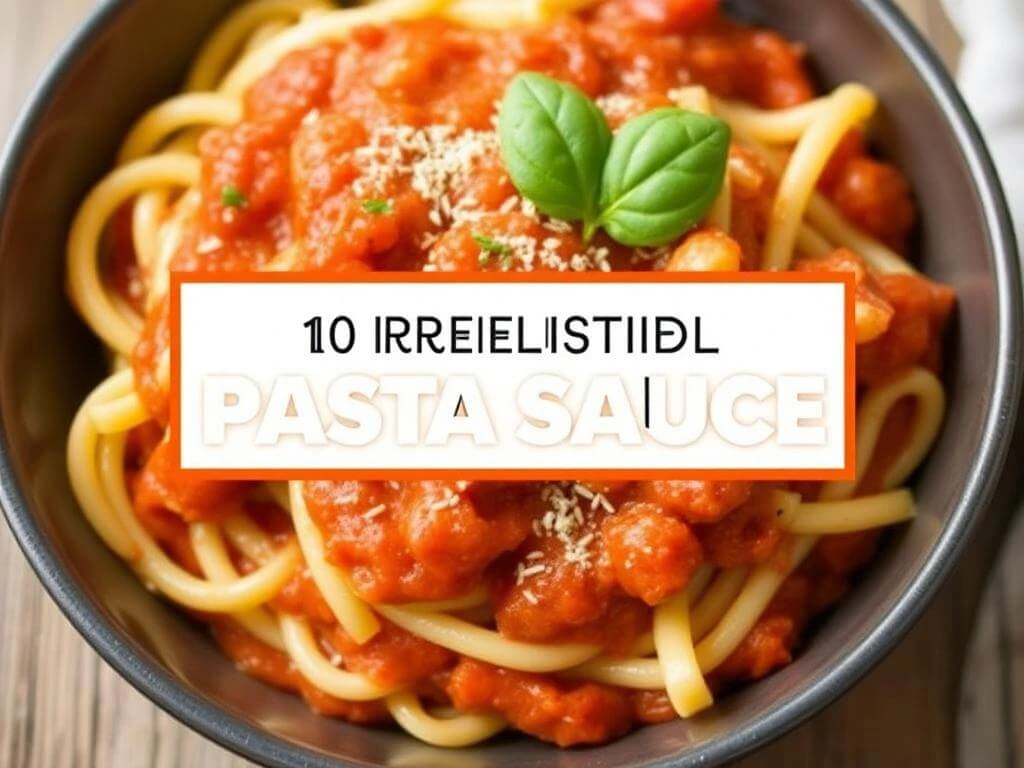
Preparation Steps:
- Melt the Butter: In a large skillet or saucepan, melt the butter over medium heat. If you’re using garlic, add it to the melted butter and sauté for about 1 minute, or until fragrant.
- Add the Cream: Pour in the heavy cream, stirring to combine with the butter. Allow the mixture to simmer gently for about 5 minutes, stirring occasionally. This helps to thicken the sauce slightly.
- Incorporate the Cheese: Gradually add the freshly grated Parmesan cheese to the cream mixture, stirring continuously until the cheese is melted and the sauce is smooth. If the sauce is too thick, you can add a splash of pasta cooking water to reach your desired consistency.
- Season: Taste the sauce and season with salt and pepper as needed. If you prefer a stronger cheese flavor, feel free to add more Parmesan.
- Serve Immediately: Alfredo sauce is best served fresh. Toss it with your favorite cooked pasta right away for a creamy, indulgent dish.
Best Pasta Pairings
Alfredo sauce pairs beautifully with various pasta shapes, but here are some of the best options:
- Fettuccine: The classic choice, as the wide noodles hold the creamy sauce perfectly.
- Penne: The tube shape allows the sauce to cling to the pasta, making each bite flavorful.
- Linguine: A great alternative that complements the sauce’s richness.
- Rotini: The spirals of rotini catch the sauce, ensuring a deliciously saucy experience.
Variations and Tips
While traditional Alfredo sauce is delightful on its own, you can easily customize it to suit your preferences:
- Add Protein: Consider adding grilled chicken, shrimp, or sautéed mushrooms for a heartier dish.
- Incorporate Vegetables: For added nutrition, toss in steamed broccoli, peas, or spinach just before serving.
- Make it Lighter: For a lighter version, you can substitute half-and-half for the heavy cream and use less butter. You can also add a bit of lemon juice for brightness.
Carbonara
Ingredients and Preparation Method
Carbonara is a classic Italian pasta dish that hails from Rome. Known for its creamy texture and rich flavor, this dish is made without any cream, relying instead on eggs and cheese to create its signature sauce. Here’s what you’ll need to make a traditional Carbonara:
- 12 ounces spaghetti or fettuccine: The pasta of choice for this dish.
- 4 ounces pancetta or guanciale: These cured meats add a savory depth; guanciale is the traditional choice.
- 2 large eggs: The key ingredient for the creamy sauce.
- 1 cup freshly grated Pecorino Romano cheese: For a sharp, salty flavor.
- Freshly cracked black pepper: To taste, for seasoning and flavor.
- Salt: For seasoning the pasta water.
Preparation Steps:
- Cook the Pasta: Bring a large pot of salted water to a boil. Add the spaghetti or fettuccine and cook according to package instructions until al dente. Reserve about 1 cup of the pasta cooking water before draining the pasta.
- Sauté the Meat: While the pasta is cooking, heat a large skillet over medium heat. Add the pancetta or guanciale and cook until it becomes crispy and golden, about 4-5 minutes. Remove from heat and set aside, leaving the rendered fat in the skillet.
- Prepare the Sauce: In a mixing bowl, whisk together the eggs, grated Pecorino Romano cheese, and a generous amount of freshly cracked black pepper until well combined. The mixture should be creamy and smooth.
- Combine Pasta and Meat: Once the pasta is cooked and drained, add it to the skillet with the crispy pancetta or guanciale. Toss to combine, allowing the residual heat to warm the pasta and meat.
- Create the Sauce: Remove the skillet from the heat and quickly pour the egg and cheese mixture over the hot pasta, tossing continuously. The heat from the pasta will cook the eggs gently, creating a creamy sauce. If the sauce is too thick, add a little reserved pasta water, a tablespoon at a time, until you reach your desired consistency.
- Serve Immediately: Plate the Carbonara and finish with additional grated Pecorino Romano and more freshly cracked black pepper to taste.
Best Pasta Pairings
While spaghetti is the traditional choice for Carbonara, you can use other pasta shapes as well. Here are some great options:
- Fettuccine: The wider noodles hold the sauce beautifully.
- Bucatini: This thick spaghetti-like pasta with a hole in the center adds a unique texture.
- Rigatoni: The ridges of rigatoni can catch the sauce, making for a hearty dish.
Variations and Tips
While traditional Carbonara is delicious as is, you can customize it to suit your taste:
- Add Vegetables: For a touch of freshness, consider adding peas or sautéed mushrooms to the dish.
- Use Different Cheeses: While Pecorino Romano is traditional, you can mix in Parmesan for a milder flavor.
- Experiment with Proteins: If you prefer a different flavor, you can substitute pancetta with bacon or even turkey bacon for a lighter option.
Creamy Pesto Sauce
Ingredients and Preparation Method
Creamy pesto sauce is a delightful twist on the traditional basil pesto, combining the vibrant flavors of fresh herbs with a rich, creamy texture. This sauce is perfect for pasta, sandwiches, or as a dip. Here’s what you’ll need to make a delicious creamy pesto sauce:
- 2 cups fresh basil leaves: The star ingredient that provides the signature flavor.
- 1/2 cup grated Parmesan cheese: For a salty, nutty flavor.
- 1/3 cup pine nuts: These add creaminess and a subtle sweetness; you can also use walnuts or almonds as alternatives.
- 2 cloves garlic: For aromatic depth.
- 1/2 cup olive oil: To blend the ingredients and create a smooth sauce.
- 1/2 cup heavy cream: For a rich, creamy texture.
- Salt and pepper to taste: Essential for seasoning.
Preparation Steps:
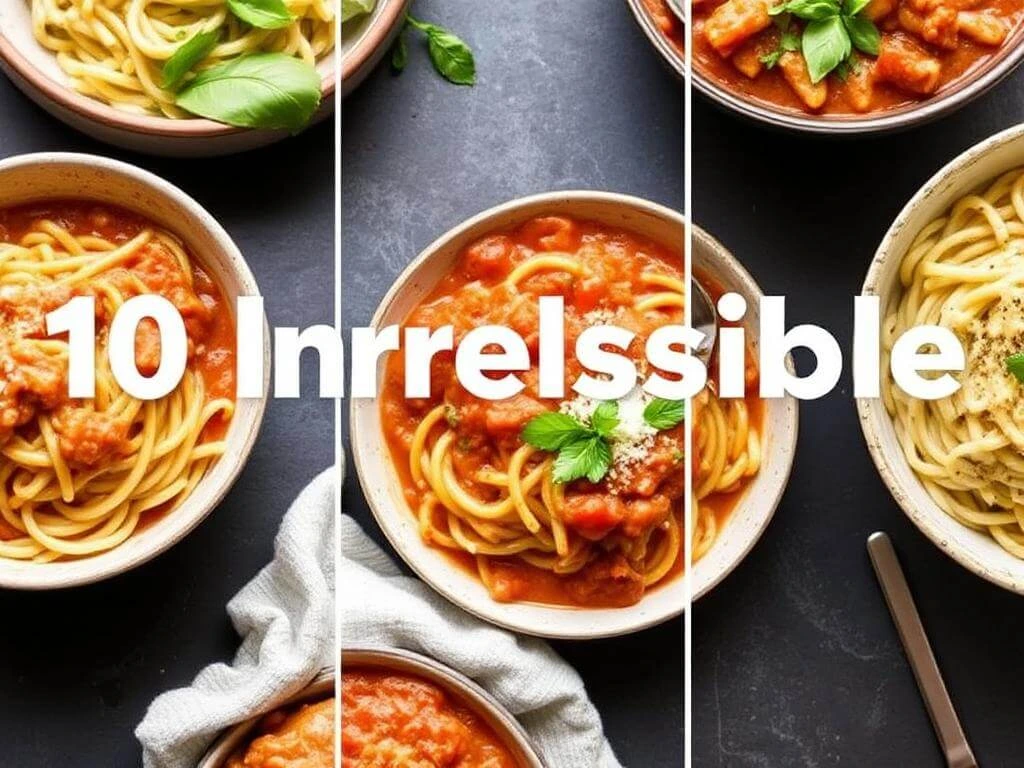
- Make the Pesto: In a food processor, combine the fresh basil leaves, grated Parmesan cheese, pine nuts, and garlic. Pulse until the ingredients are finely chopped.
- Add Olive Oil: With the food processor running, slowly drizzle in the olive oil until the mixture is smooth and well combined. You may need to scrape down the sides of the bowl to ensure everything is incorporated.
- Incorporate the Cream: Transfer the pesto to a mixing bowl and stir in the heavy cream. Mix until the sauce is creamy and well blended. If the sauce is too thick, you can add a little more olive oil or a splash of pasta cooking water to reach your desired consistency.
- Season: Taste the creamy pesto sauce and season with salt and pepper as needed. Adjust the flavors to your liking, adding more cheese or garlic if desired.
Best Pasta Pairings
Creamy pesto sauce pairs wonderfully with various pasta shapes, enhancing their flavors and textures. Here are some excellent options:
- Fusilli: The spirals of fusilli catch the creamy sauce beautifully, ensuring every bite is flavorful.
- Penne: The tube shape allows the sauce to cling to the pasta, making for a satisfying dish.
- Linguine: A great choice that complements the sauce’s richness.
- Farfallini (Bowtie Pasta): The unique shape adds a fun element to the dish and holds the sauce well.
Variations and Tips
While creamy pesto sauce is delicious on its own, you can easily customize it to suit your taste:
- Add Vegetables: For added nutrition, consider mixing in steamed broccoli, spinach, or sun-dried tomatoes.
- Incorporate Protein: Grilled chicken, shrimp, or even chickpeas can be added for a heartier meal.
- Experiment with Nuts: If you’re allergic to pine nuts, try using sunflower seeds or cashews for a different flavor profile.
Unique and Creative Pasta Sauces
Roasted Red Pepper Sauce
Ingredients and Preparation Method
Roasted red pepper sauce is a vibrant and flavorful sauce that adds a smoky sweetness to your pasta dishes. This sauce is not only delicious but also incredibly easy to make, making it a fantastic option for a quick weeknight meal. Here’s what you’ll need:
- 2 large red bell peppers: The main ingredient, providing sweetness and color.
- 2 tablespoons olive oil: For sautéing and adding richness.
- 2 cloves garlic, minced: For aromatic depth.
- 1/2 cup heavy cream: To create a creamy texture.
- 1 teaspoon dried oregano: For a hint of herbal flavor.
- Salt and pepper to taste: Essential for seasoning.
- Fresh basil or parsley (optional): For garnish and added freshness.
Preparation Steps:
- Roast the Peppers: Preheat your oven to 450°F (230°C). Place the red bell peppers on a baking sheet and roast them in the oven for about 20-25 minutes, turning occasionally, until the skins are charred and blistered. Alternatively, you can roast them over an open flame on a gas stove or grill for a smoky flavor. Once roasted, remove them from the oven and place them in a bowl covered with plastic wrap for about 10 minutes. This will help steam the skins, making them easier to peel.
- Peel and Prepare: After steaming, peel the skins off the roasted peppers, remove the seeds, and chop them roughly.
- Sauté the Garlic: In a large skillet, heat the olive oil over medium heat. Add the minced garlic and sauté for about 1-2 minutes, or until fragrant but not browned.
- Blend the Sauce: Add the chopped roasted red peppers to the skillet with the garlic. Stir in the heavy cream and dried oregano. Use an immersion blender to puree the mixture until smooth. If you don’t have an immersion blender, you can transfer the mixture to a regular blender and blend until smooth, then return it to the skillet.
- Season: Taste the sauce and season with salt and pepper as needed. If you prefer a thinner sauce, you can add a splash of pasta cooking water to reach your desired consistency.
- Serve: Toss the roasted red pepper sauce with your favorite cooked pasta, and garnish with fresh basil or parsley if desired.
Best Pasta Pairings
Roasted red pepper sauce pairs beautifully with various pasta shapes, enhancing their flavors and textures. Here are some excellent options:
- Fusilli: The spirals of fusilli catch the sauce perfectly, ensuring every bite is flavorful.
- Penne: The tube shape allows the sauce to cling to the pasta, making for a satisfying dish.
- Linguine: A great choice that complements the sauce’s richness.
- Rigatoni: The ridges of rigatoni help trap the sauce, making for a hearty meal.
Variations and Tips
While roasted red pepper sauce is delicious on its own, you can easily customize it to suit your taste:
- Add Cheese: Stir in some grated Parmesan or feta cheese for added creaminess and flavor.
- Incorporate Protein: Grilled chicken, shrimp, or even chickpeas can be added for a heartier meal.
- Spice it Up: For a kick of heat, add a pinch of red pepper flakes or a dash of hot sauce.
Garlic and Olive Oil Sauce (Aglio e Olio)
Ingredients and Preparation Method
Aglio e Olio is a classic Italian pasta dish that highlights the simplicity and bold flavors of garlic and olive oil. This dish is quick to prepare, making it an excellent choice for a weeknight dinner or a late-night snack. Here’s what you’ll need to make this delicious sauce:
- 12 ounces spaghetti or linguine: The pasta of choice for this dish.
- 1/2 cup extra virgin olive oil: The base of the sauce, providing richness and flavor.
- 6 cloves garlic, thinly sliced: For a robust garlic flavor.
- 1 teaspoon red pepper flakes: For a touch of heat (adjust to taste).
- Salt: For seasoning the pasta water and the sauce.
- Fresh parsley, chopped: For garnish and added freshness.
- Grated Parmesan cheese (optional): For serving, if desired.
Preparation Steps:
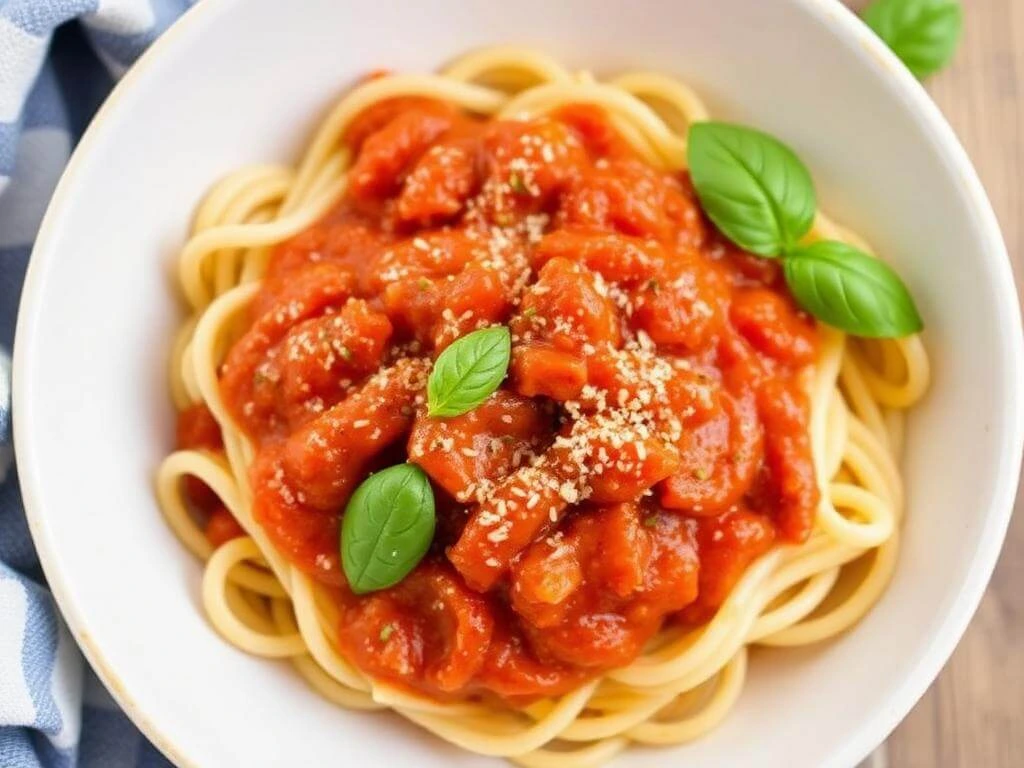
- Cook the Pasta: Bring a large pot of salted water to a boil. Add the spaghetti or linguine and cook according to package instructions until al dente. Reserve about 1 cup of the pasta cooking water before draining the pasta.
- Prepare the Sauce: While the pasta is cooking, heat the olive oil in a large skillet over medium heat. Add the sliced garlic and sauté gently, stirring frequently, until the garlic is golden and fragrant, about 2-3 minutes. Be careful not to let the garlic burn, as it can turn bitter.
- Add Red Pepper Flakes: Once the garlic is golden, add the red pepper flakes to the skillet and stir for about 30 seconds to release their flavor.
- Combine Pasta and Sauce: Add the drained pasta to the skillet, tossing to coat the noodles in the garlic and olive oil mixture. If the pasta seems dry, add a splash of the reserved pasta cooking water to help create a silky sauce.
- Season and Serve: Taste the pasta and season with salt as needed. Remove from heat and toss in the chopped fresh parsley. Serve immediately, garnished with grated Parmesan cheese if desired.
Best Pasta Pairings
While spaghetti is the traditional choice for Aglio e Olio, you can use other pasta shapes as well. Here are some great options:
- Linguine: A flat noodle that pairs well with the sauce.
- Fettuccine: The wider noodles hold the sauce beautifully.
- Bucatini: This thick spaghetti-like pasta with a hole in the center adds a unique texture.
- Penne: The tube shape allows the sauce to cling to the pasta, making for a satisfying dish.
Variations and Tips
While traditional Aglio e Olio is delicious as is, you can customize it to suit your taste:
- Add Vegetables: For added nutrition, consider tossing in sautéed spinach, cherry tomatoes, or broccoli.
- Incorporate Protein: Grilled chicken, shrimp, or even chickpeas can be added for a heartier meal.
- Experiment with Herbs: Fresh basil or oregano can be added for an extra layer of flavor.
Lemon and Herb Sauce
Ingredients and Preparation Method
Lemon and herb sauce is a bright, zesty sauce that adds a refreshing twist to your pasta dishes. This sauce is perfect for those who enjoy light, citrusy flavors and is incredibly easy to prepare. It pairs well with a variety of pasta shapes and can be customized with your favorite herbs. Here’s what you’ll need:
- 12 ounces pasta of your choice: Spaghetti, fettuccine, or penne work well.
- 1/4 cup extra virgin olive oil: For richness and flavor.
- Zest and juice of 1 large lemon: For a bright, citrusy flavor.
- 2 cloves garlic, minced: For aromatic depth.
- 1/4 cup fresh parsley, chopped: For freshness and color.
- 1/4 cup fresh basil, chopped: For a sweet, aromatic flavor.
- Salt and pepper to taste: Essential for seasoning.
- Grated Parmesan cheese (optional): For serving, if desired.
Preparation Steps:
- Cook the Pasta: Bring a large pot of salted water to a boil. Add the pasta and cook according to package instructions until al dente. Reserve about 1 cup of the pasta cooking water before draining the pasta.
- Prepare the Sauce: In a large skillet, heat the olive oil over medium heat. Add the minced garlic and sauté for about 1-2 minutes, or until fragrant but not browned.
- Add Lemon: Stir in the lemon zest and juice, allowing the mixture to simmer for about 1 minute. This will help to infuse the oil with the bright citrus flavor.
- Combine Pasta and Sauce: Add the drained pasta to the skillet, tossing to coat the noodles in the lemon and garlic mixture. If the pasta seems dry, add a splash of the reserved pasta cooking water to help create a silky sauce.
- Incorporate Fresh Herbs: Remove the skillet from heat and stir in the chopped parsley and basil. Season with salt and pepper to taste.
- Serve: Plate the pasta and garnish with additional herbs and grated Parmesan cheese if desired. Serve immediately for the best flavor.
Best Pasta Pairings
Lemon and herb sauce pairs beautifully with various pasta shapes, enhancing their flavors and textures. Here are some excellent options:
- Spaghetti: The long strands of pasta are perfect for catching the light sauce.
- Fettuccine: The wider noodles hold the sauce beautifully, making for a satisfying dish.
- Penne: The tube shape allows the sauce to cling to the pasta, ensuring every bite is flavorful.
- Orzo: This rice-shaped pasta works wonderfully with the light sauce, making for a delightful presentation.
Variations and Tips
While lemon and herb sauce is delicious on its own, you can easily customize it to suit your taste:
- Add Vegetables: For added nutrition, consider tossing in steamed asparagus, zucchini, or cherry tomatoes.
- Incorporate Protein: Grilled chicken, shrimp, or even chickpeas can be added for a heartier meal.
- Experiment with Herbs: Feel free to mix in other fresh herbs like thyme, dill, or chives for a different flavor profile.
Vegetarian and Healthy Pasta Sauces
Spinach and Ricotta Sauce
Ingredients and Preparation Method
Spinach and ricotta sauce is a creamy, nutritious option that combines the mild flavors of ricotta cheese with the vibrant taste of fresh spinach. This sauce is not only delicious but also packed with nutrients, making it a great choice for a wholesome meal. Here’s what you’ll need:
- 12 ounces pasta of your choice: Fettuccine, penne, or farfalle work well.
- 2 cups fresh spinach: You can use baby spinach or regular spinach, washed and chopped.
- 1 cup ricotta cheese: For creaminess and a mild flavor.
- 1/2 cup grated Parmesan cheese: For added flavor and richness.
- 2 cloves garlic, minced: For aromatic depth.
- 1 tablespoon olive oil: For sautéing the spinach and garlic.
- Salt and pepper to taste: Essential for seasoning.
- Fresh basil or parsley (optional): For garnish and added freshness.
Preparation Steps:
- Cook the Pasta: Bring a large pot of salted water to a boil. Add the pasta and cook according to package instructions until al dente. Reserve about 1 cup of the pasta cooking water before draining the pasta.
- Sauté the Spinach and Garlic: In a large skillet, heat the olive oil over medium heat. Add the minced garlic and sauté for about 1-2 minutes, or until fragrant. Then, add the fresh spinach and cook until wilted, about 3-4 minutes. Season with salt and pepper to taste.
- Combine with Ricotta: In a mixing bowl, combine the sautéed spinach and garlic with the ricotta cheese and grated Parmesan. Mix until well combined. If the mixture is too thick, you can add a splash of the reserved pasta cooking water to achieve a creamier consistency.
- Combine Pasta and Sauce: Add the drained pasta to the skillet with the spinach and ricotta mixture. Toss to coat the noodles evenly. If the sauce seems too thick, add more reserved pasta water until you reach your desired consistency.
- Serve: Plate the pasta and garnish with additional grated Parmesan and fresh herbs if desired. Serve immediately for the best flavor.
Best Pasta Pairings
Spinach and ricotta sauce pairs beautifully with various pasta shapes, enhancing their flavors and textures. Here are some excellent options:
- Fettuccine: The wide noodles hold the creamy sauce beautifully.
- Penne: The tube shape allows the sauce to cling to the pasta, making for a satisfying dish.
- Farfalle: The bowtie shape adds a fun element to the dish and holds the sauce well.
- Rotini: The spirals of rotini catch the sauce, ensuring a deliciously saucy experience.
Variations and Tips
While spinach and ricotta sauce is delicious on its own, you can easily customize it to suit your taste:
- Add Other Vegetables: Consider incorporating sautéed mushrooms, zucchini, or sun-dried tomatoes for added flavor and nutrition.
- Incorporate Protein: Grilled chicken, shrimp, or even chickpeas can be added for a heartier meal.
- Experiment with Cheese: You can mix in other cheeses like feta or goat cheese for a different flavor profile.
Mushroom Sauce
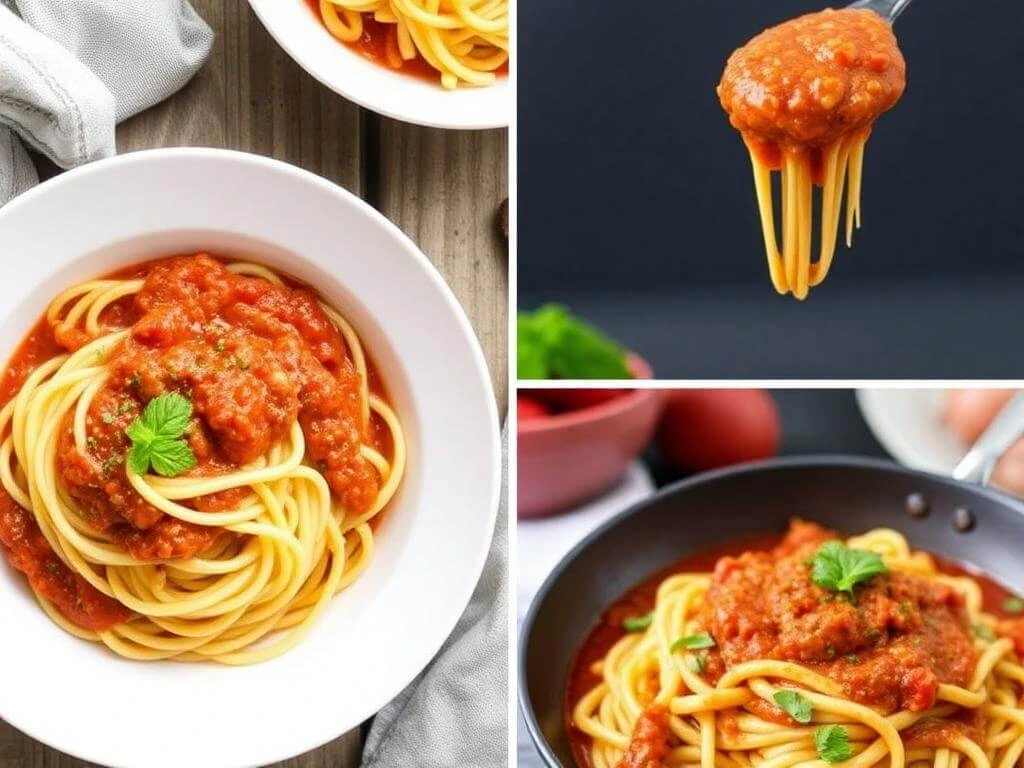
Ingredients and Preparation Method
Mushroom sauce is a rich and savory option that adds depth and umami to your pasta dishes. This sauce is perfect for mushroom lovers and can be made with a variety of mushrooms for different flavor profiles. Here’s what you’ll need:
- 12 ounces pasta of your choice: Fettuccine, tagliatelle, or penne work well.
- 8 ounces mushrooms: Use a mix of cremini, shiitake, or button mushrooms, sliced.
- 2 tablespoons olive oil: For sautéing the mushrooms.
- 2 tablespoons unsalted butter: Adds richness and flavor.
- 2 cloves garlic, minced: For aromatic depth.
- 1/2 cup heavy cream: For a creamy texture.
- 1/2 cup vegetable or chicken broth: For added flavor and moisture.
- 1 teaspoon dried thyme: For an earthy flavor.
- Salt and pepper to taste: Essential for seasoning.
- Fresh parsley, chopped (optional): For garnish and added freshness.
- Grated Parmesan cheese (optional): For serving, if desired.
Preparation Steps:
- Cook the Pasta: Bring a large pot of salted water to a boil. Add the pasta and cook according to package instructions until al dente. Reserve about 1 cup of the pasta cooking water before draining the pasta.
- Sauté the Mushrooms: In a large skillet, heat the olive oil and butter over medium heat. Add the sliced mushrooms and sauté for about 5-7 minutes, or until they are golden brown and have released their moisture. Stir occasionally to ensure even cooking.
- Add Garlic and Seasonings: Once the mushrooms are browned, add the minced garlic and dried thyme. Sauté for an additional 1-2 minutes, or until the garlic is fragrant.
- Incorporate Broth and Cream: Pour in the vegetable or chicken broth, stirring to combine. Allow the mixture to simmer for about 3-4 minutes to reduce slightly. Then, add the heavy cream and stir until the sauce is well combined. Let it simmer for another 2-3 minutes until the sauce thickens. If the sauce is too thick, you can add a splash of the reserved pasta cooking water to reach your desired consistency.
- Combine Pasta and Sauce: Add the drained pasta to the skillet, tossing to coat the noodles in the mushroom sauce. Season with salt and pepper to taste.
- Serve: Plate the pasta and garnish with fresh parsley and grated Parmesan cheese if desired. Serve immediately for the best flavor.
Best Pasta Pairings
Mushroom sauce pairs beautifully with various pasta shapes, enhancing their flavors and textures. Here are some excellent options:
- Fettuccine: The wide noodles hold the creamy sauce beautifully.
- Tagliatelle: The flat noodles complement the richness of the sauce.
- Penne: The tube shape allows the sauce to cling to the pasta, making for a satisfying dish.
- Orecchiette: The small, ear-shaped pasta captures the sauce perfectly.
Variations and Tips
While mushroom sauce is delicious on its own, you can easily customize it to suit your taste:
- Add Other Vegetables: Consider incorporating spinach, peas, or sun-dried tomatoes for added flavor and nutrition.
- Incorporate Protein: Grilled chicken, shrimp, or even crumbled sausage can be added for a heartier meal.
- Experiment with Different Mushrooms: Try using wild mushrooms like chanterelles or morels for a gourmet touch.
Zucchini Noodle Sauce
Ingredients and Preparation Method
Zucchini noodle sauce is a light and healthy option that pairs perfectly with spiralized zucchini, also known as “zoodles.” This sauce is fresh, vibrant, and a great way to incorporate more vegetables into your diet. Here’s what you’ll need:
- 4 medium zucchinis: Spiralized into noodles (zoodles).
- 2 tablespoons olive oil: For sautéing and adding flavor.
- 2 cloves garlic, minced: For aromatic depth.
- 1 can (14 ounces) diced tomatoes: For a fresh, tangy base.
- 1 teaspoon dried oregano: For a hint of herbal flavor.
- 1/2 teaspoon red pepper flakes (optional): For a touch of heat.
- Salt and pepper to taste: Essential for seasoning.
- Fresh basil leaves, chopped: For garnish and added freshness.
- Grated Parmesan cheese (optional): For serving, if desired.
Preparation Steps:
- Prepare the Zoodles: If you haven’t already, spiralize the zucchinis using a spiralizer or a julienne peeler. Set aside.
- Sauté the Garlic: In a large skillet, heat the olive oil over medium heat. Add the minced garlic and sauté for about 1-2 minutes, or until fragrant but not browned.
- Add Tomatoes and Seasonings: Pour in the diced tomatoes (with their juices) and stir in the dried oregano, red pepper flakes (if using), salt, and pepper. Allow the mixture to simmer for about 5-7 minutes, letting the flavors meld and the sauce thicken slightly.
- Cook the Zoodles: Add the spiralized zucchini noodles to the skillet, tossing gently to coat them in the sauce. Cook for an additional 2-3 minutes, just until the zoodles are tender but still have a bit of crunch. Be careful not to overcook them, as they can become mushy.
- Serve: Plate the zucchini noodles topped with the sauce. Garnish with fresh basil and grated Parmesan cheese if desired. Serve immediately for the best flavor and texture.
Best Pasta Pairings
While zucchini noodles are a fantastic low-carb alternative, this sauce can also be paired with traditional pasta shapes. Here are some great options:
- Spaghetti: The long strands of pasta work well with the light sauce.
- Fettuccine: The wider noodles hold the sauce beautifully.
- Penne: The tube shape allows the sauce to cling to the pasta, making for a satisfying dish.
- Whole Wheat Pasta: For a healthier option that still provides the comfort of traditional pasta.
Variations and Tips
While zucchini noodle sauce is delicious on its own, you can easily customize it to suit your taste:
- Add Protein: Consider adding grilled chicken, shrimp, or chickpeas for a heartier meal.
- Incorporate Other Vegetables: Bell peppers, spinach, or mushrooms can be added for extra flavor and nutrition.
- Experiment with Herbs: Fresh herbs like parsley, thyme, or dill can enhance the flavor profile of the sauce.
Conclusion
In this culinary journey through the world of pasta sauces, we’ve explored a delightful array of flavors and textures that can elevate your pasta dishes from ordinary to extraordinary. From the classic richness of Bolognese and the creamy indulgence of Alfredo to the vibrant freshness of Lemon and Herb Sauce and the lightness of Zucchini Noodle Sauce, each recipe offers a unique twist that caters to various tastes and dietary preferences.
Whether you’re a fan of hearty, meaty sauces or prefer something lighter and more refreshing, there’s a pasta sauce here for everyone. These recipes are not only easy to prepare but also allow for customization, so you can make them your own by adding your favorite ingredients or adjusting the flavors to suit your palate.
As you experiment with these sauces, don’t hesitate to get creative! Pair them with different pasta shapes, incorporate seasonal vegetables, or add proteins to make a complete meal. The beauty of pasta is its versatility, and with these sauces in your repertoire, you can create countless delicious dishes that will impress family and friends alike.
So, the next time you find yourself in the kitchen, remember these 10 irresistible pasta sauce recipes and let your culinary imagination run wild. Enjoy the process of cooking, savor the flavors, and most importantly, share your delicious creations with those you love. Buon appetito!

